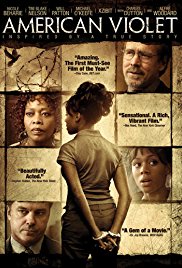1. Introductory Discussion
Start the class by asking students to define plea bargaining and to describe a situation that they know about in which someone was offered a plea bargain. Guide the class discussion to at least the following points, supplying the information if the class cannot respond to the questions:
- a definition of plea bargaining – In a plea bargain the defendant gets a reduced sentence or the dismissal of some of the charges; in return, the defendant must plead guilty or “no contest” to one or more crimes;
- when a person accused of a crime enters into a plea bargain, he or she waives certain constitutional rights;
- almost all criminal cases (95%, according to the U.S. Supreme Court) end in a plea bargain, not a trial;
- it is up to prosecutors to decide whether to charge someone with a crime or what particular crime to charge them with.
Tell the class that after the film clip, there will be a discussion about the benefits and costs of the plea bargaining system to persons accused of crimes, to prosecutors, and to society.
2. Show the first 31 minutes of the film, ending when Dee Roberts’ friend takes a plea, although she was innocent, and is allowed to go home. Dee then sinks to the floor of the cell with her head in her hands.
3. After the clip has been shown, ask students what constitutional rights the accused person gives up when he or she takes a plea bargain. Here are a few rights that should be included in any discussion; again if the class cannot supply the answers, the teacher can provide the information:
- trial by jury;
- the right to a unanimous verdict;
- the right to require the government to prove guilt beyond a reasonable doubt;
- the right to remain silent – a plea bargain usually provides that a defendant plead guilty to some crime;
- the right to confront their accuser in court.
Ask the class to identify the competing public policies involved in whether or not to allow plea bargaining. Guide the discussion to cover the following points, supplying any information that the class cannot provide:
Ask the class about the interests of each stakeholder that are served by the plea bargaining system. The stakeholders are the prosecutor, the accused person, victims and society as a whole. Guide the discussion to cover the following points:
- The accused, innocent or guilty, can avoid the cost and disruption of a trial;
- The accused, innocent or guilty, gets a sure result and avoids the risk of harsher punishment if they go to trial;
- The accused, innocent or guilty, can avoid the publicity a trial could involve;
- The prosecutor gets a guaranteed conviction;
- The prosecutor saves the expense and the time involved in a trial;
- The victim gets a guaranteed conviction, although perhaps not the punishment that the victim would want imposed on the accused;
- The public avoids the expense of conducting a trial on every crime charged.
Ask the class to state the policy choices made by society when it adopted a justice system based on plea bargains. Guide the discussion to cover the following points, supplying information if the class cannot provide it:
- the justice that is achieved in plea bargains, while imperfect, is enough so that it is not necessary to spend the money and devote the human resources that would be required for a criminal justice system base don trials.
Finally, ask the class if they agree or disagree with the choices that society has made with respect to plea bargains and to support their conclusions. The snippet starts at the beginning of the movie and runs through the scene in which Ms. Robert’s friend accepts a plea bargain and is released. Stop the film right after Dee sinks to the floor of the cell, her head in her hands. This is about 31 minutes into the film.
4. Assignments:
Students can be asked to write formal or informal essays on the following topics:
- A look at plea bargaining from the standpoint of the victim and the victim’s friends and relatives. [A strong essay would include the concept that a lenient plea bargain will not satisfy the victims’ desire for justice, i.e., to have the criminal punished. However, plea bargaining spares victims the agony of a trial and the risk of feeling very badly if the defendant is acquitted.]
- Identifying the factors that can result in plea bargains which are either too lenient or too harsh. [A strong essay will include the following points: (1) success for either side depends upon the skill of the attorneys in negotiating not just the guilt or innocence of the accused; (2) prosecutors are not required to disclose any problems with their evidence; (3) prosecutors are eager for plea bargains because it results in an easy conviction, and prosecutors are judged on the number of convictions they achieve; (4) in certain situations some defense attorneys may not want to advocate strongly for their clients because the defense attorneys have to work with the prosecutors on other cases; (5) the accused may feel pressure to agree because of the disruption and cost of a trial.
- Whether plea bargaining should be replaced with a system that allows a defendant only two choices: pleading guilty or going to trial; have the class evaluate the pros and cons of each system. This can also take the form of a debate pro or con on the proposition: Plea bargaining should be replaced with a criminal justice system in which plea bargaining would not be allowed and an accused person could only plead guilty or go to trial.
- Set out and evaluate the most important ideas about how to reform the plea bargaining process. Another way to express this essay prompt is: How can society improve the results of the criminal justice system without substantially increasing costs.
- Evaluate the plea bargaining system, describe the public policies which it serves and the public policy compromises that it requires, and express and justify an opinion about whether the plea bargaining system is, overall, good public policy,
- Students can research and write a formal essay or create a class presentation on “the prisoner’s dilemma.”






